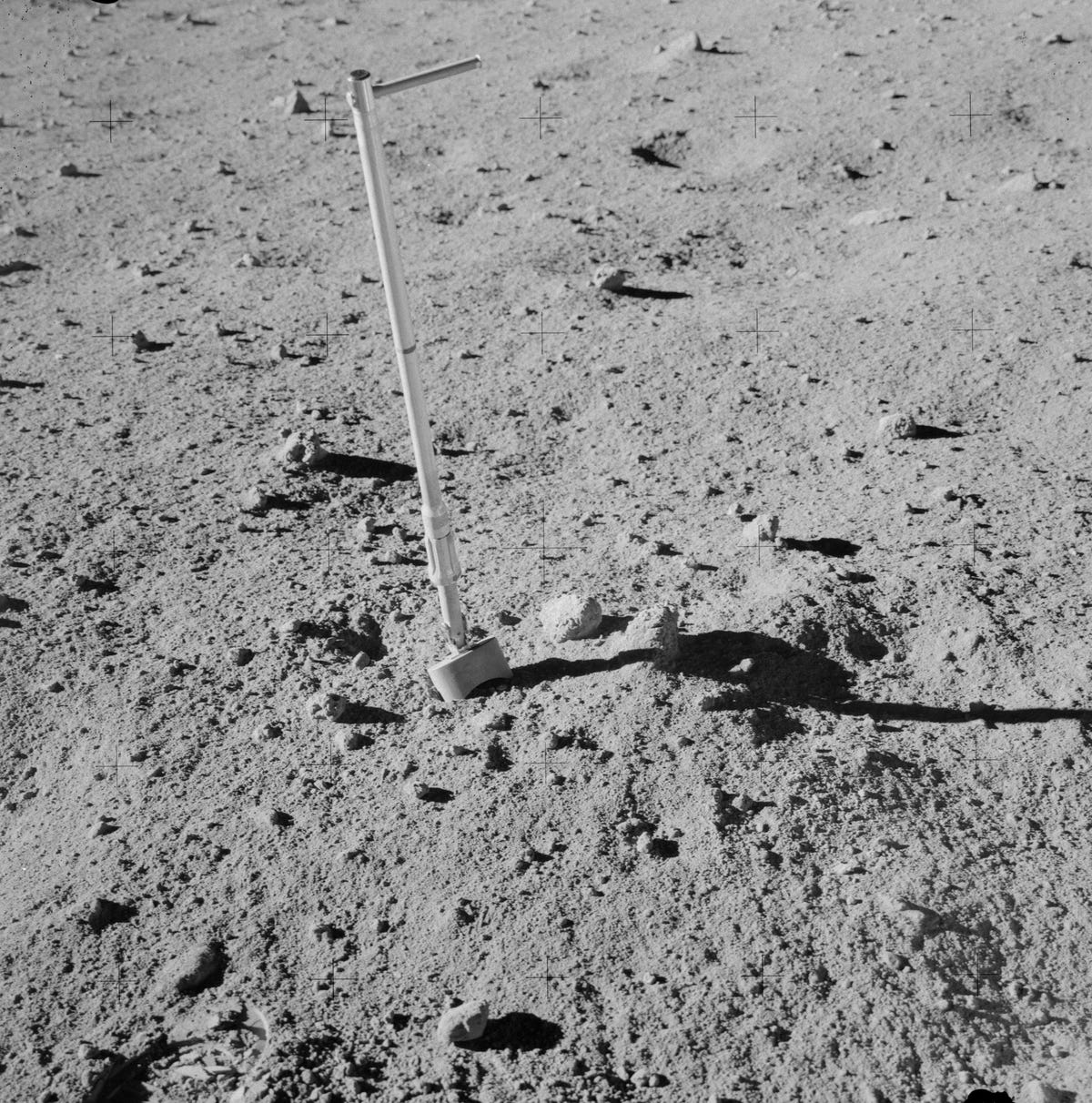Russia's amazing moon base: Everything we know
Russia never does anything small; its reported plans for a moon base may be its most daring move yet.

All your base are belong to Russ
Talk about taking the high ground! Russia's imperial impulses may have found a new frontier...or maybe they're simply repurposing an old one -- the space race. According to sources quoted by the Russian news agency Tass, the Russians are aiming to put a permanent base on the moon as early as 2030.
We're betting it won't look anything like the trippy artist's conception above, but we do have plenty of intel on what to expect...
They'll ignore Mars...for now
With America focused more on Mars (here's a shot of NASA's mock-Martian habitat) the Russians are poised to stake their scientific, technological and maybe even territorial claims closer to home.
Their proposed lunar base would include several prefabricated sections, including a solar power station, a telecommunications hub, a scientific module, a long-range research rover, a landing and launch area, and its very own orbiting satellite.
Their moon base will have a space base
All the expertise Russia gleaned working with the US and Europe on the International Space Station will clearly be put to good use via its moon base, which, Tass' sources say, also will operate a staging area in low-earth orbit.
They won't do it alone
"We have to go to the moon," Igor Mitrofanov, one of the Russian program's lead scientists, told BBC News, adding, "We have to work together with our international colleagues."
The European Space Agency has already signed on to help, developing this landing system, which includes a drill that can bore into the moon's surface. Its destination: the moon's South Pole-Aitken basin.
They'll go where the water is
The discovery of potentially significant quantities of water near the moon's poles has increased the possibility that humans could live and work there. That's why the Russian-European team is focusing its base-location scouting missions on the South Pole-Aitken basin, shown in the cool blue area here, beginning in the 2020s.
They might print their base
NASA's Solar System Research Virtual Institute (SSERVI) notes that 3D-printing moon shelters from local materials could be a viable option for any future lunar mission.
"3D printing offers a potential means of facilitating lunar settlement with reduced logistics from Earth," adds the ESA's Scott Hovland.
They could print whole moon buildings
"Terrestrial 3D-printing technology has produced entire structures," explained Laurent Pambaguian, head of the cooperative project with the Russians for ESA. "Our industrial team investigated if it could similarly be employed to build a lunar habitat."
The European Space Agency's business partners devised a weight-bearing "catenary" dome design with a cellular structured wall to help shield against micrometeoroids and space radiation to shelter astronauts. SSERVI reports that the base's design was guided in turn by the properties of 3D-printed lunar soil, with a 1.5 ton building block produced as a demonstration. That so rocks.
Or they'll just blow up their base
The Russians (or anyone else building a moon base) also could use an inflatable hardened shell that could be shielded from radiation and meteoroid impact by applying layers of rocky regolith from the moon's surface. (The dirt could be 3D-printed, or Russia could kick it old school with a shovel.)
It's a little bit like a sod house without the sod, attached to some high-tech Lego modules schlepped into space by the Rooskis.
They might end up in moon caves
We started out in caves on Earth, so why not do the same on the moon? With the discovery of the first lava tube on the moon in 2011, underground shelter might be a viable option, and the Russians are all over it.
According to Reuters, Sergei Krikalyov, head of Russia's cosmonaut training program, notes, "This new discovery that the moon may be a rather porous body could significantly alter our approach to founding lunar bases. If it turns out that the moon has a number of caves that can provide some protection from radiation and meteor showers, it could be an even more interesting destination than previously thought."

They might have to dig...a lot
Another possible location for the Russian base, analysts say, is under the lunar surface. The logic: Any structure above ground would have to protect researchers from extreme heat and cold.
They're putting a six-pack in the sky
Wherever it ends up on the moon, the base mission looks to be a six-launch effort, with the first pair of shots carrying a lunar lander (much like the one shown here) and a rocket to propel it to the moon; the second salvo bearing the manned orbiter/return vehicle (and the rocket); and the final flights delivering the initial lunar base unit.
They're thinking big by thinking smaller
Instead of the supermassive boosters the US used to send our astronauts to the moon back in the '60s and '70s, Russian space agency Roscosmos is reportedly downsizing the payload for each launch.
Mother Russia's proposed new lunar mission would launch multiple rockets in pairs, which would meet up in orbit to combine resources and from there strike out for the moon.
They'll use newish rockets
Central to Russia's rising moon ambitions is the Angara-A5V heavy-lift carrier rocket, which the country began testing in 2014. Powered by liquid oxygen and kerosene, the five-rocket Angara-A5V can deliver payloads of 50,000 pounds to low-earth orbit (with greater capacities to come).
Their boosters will be big
Even if it's not as powerful as America's old Saturn boosters (shown here), the three-stage behemoth Angara-A5V is still a big deal, standing 180 feet tall. And it's got quite a kick when you light the candle.
They'll do what America couldn't
This isn't the first time that a country has talked about colonizing the moon. America has toyed with the idea too, largely during the George W. Bush era. Here's a NASA concept drawing of what our base might have looked like.
They're probably going for the resources
The nearly eternal sunshine of some parts of the moon make it possible to create truly efficient solar power on the surface or, better yet, in orbit. The power generated could be used on the moon or, eventually beamed back to Earth, a concept that has been floated by Japanese space scientists.
And while the pure science bliss is surely a part of the attraction for Russia and other moon players like China, getting up close and personal with potentially vital minerals like titanium and whatever else is up there could be a huge bonus as terrestrial resources dwindle.